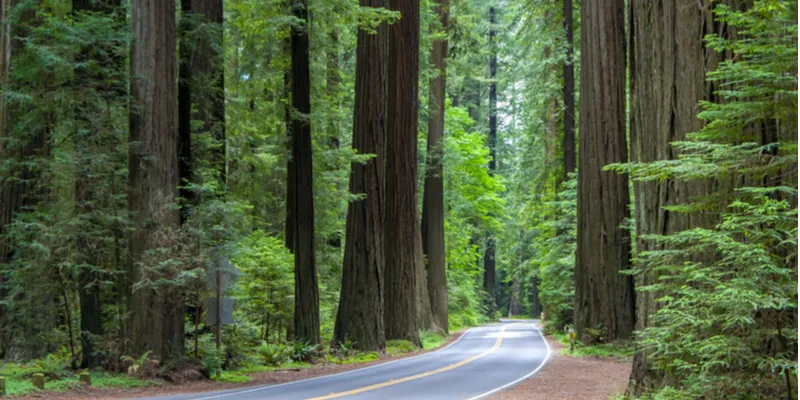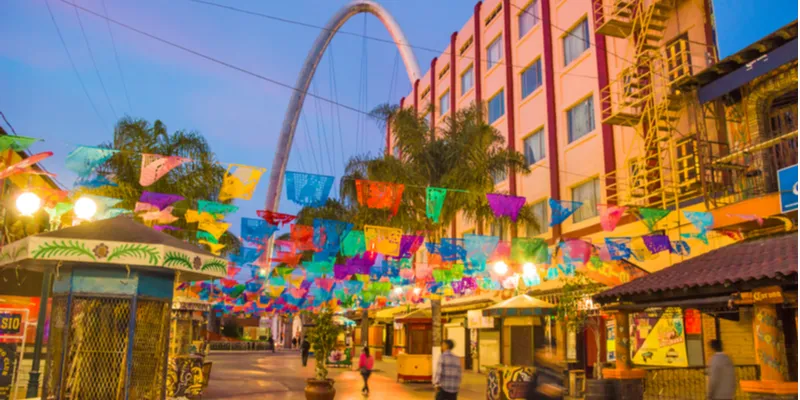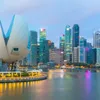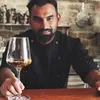Dhruv Bogra takes a solo odyssey on a bicycle from Alaska to Peru
Dhruv Bogra embarked on an epic, solo and unsupported 15,000 km cycling journey from Deadhorse in Alaska to Cusco in Peru. Here is a first-person account of some of his adventures…
The wind and the snow swept across my face and pounded my rain jacket, sneaking past my waterproof thermal gloves and icing my fingers, and trickling down from my neck into my down jacket. Such was the ferocity of the weather that it was already dark in the land of the midnight sun and the temperature dipped to -5 degree Celsius.

Dhruv on Cassiar Stewart Highway
I was cycling solo and unsupported on the stark and remote Dalton highway and was headed to South America that is 8,000 miles away. Everything that I needed to be off the grid for weeks was with me, from two weeks of supply of dehydrated food, fuel stove, 2 litres of fuel, cooking pots, a tent, a bear-proof food bag, a sleeping bag, a solar panel satellite messenger, bike tools and other essential gear, totalling to 40 kgs.
Where it began
Earlier that day, on June 21, 2016, I had started from Deadhorse, the last truck stop in the world lying on the edge of the Beaufort Sea in Alaska, 300 miles above the Arctic Circle.

Icefield Parkway
The first day on this 400-day journey literally became a metaphor for the incredible landscape, diversity in weather and terrain, people, wildlife and hardship that I encountered from Alaska to Peru.
The barren tundra, home to the indigenous Natives from Alaska and the Yukon and tiny community settlements made way to vast swathes of millions of acres of oak, cedar and fir forests. I cycled deep into the most uninhabited regions of the world like the Yukon, the Cassiar Highway in British Columbia, camping by rivers, lakes, streams, glaciers and campgrounds and seeing bears up close on the road almost each day.
By my 100th road day on the road, I had reached the Canadian Rockies and was gifted the most magnificent and stunning views of ancient glaciers and mountains. Mount Robson, Jasper and Banff National park and the most beautiful highway in the world - the Icefield Parkway are etched in my mind as pristine wonders.
My biggest day-to-day challenge in the Arctic, Yukon and B.C, other than climbing hills and mountains all day long was ensuring I had enough food to last me at any time for up to four to five days as these regions are sparsely populated and truly remote and devoid of resupply points for hundreds of miles.
In my panniers, there was always a loaf of bread, peanut butter, rice, lentils, oatmeal packets, cheddar cheese, jerky meat, almonds, trail mix and oatmeal bars. At times, I would also load up on chocolates at a well-stocked grocery store. My favourite meal at night was to cook rice, lentil, cheese and dried meat together. It was nourishing and filling after having burnt over 4,000 – 5,000 calories on any given day.
Stunning landscapes
In late Autumn 2016 after cycling 2,000 miles through Western Canada, I crossed over from the charming port city of Victoria in Vancouver Island to Port Angeles in the United States, to continue my journey along the West Coast. Winter came to North America four weeks earlier that year and so did the Pacific Northwest monsoon. As I cycled south along Highway 101, I was hammered by torrential rain almost each day.
The next sixty days that I spent cycling the 1,500 miles down the west coast of the US to Mexico were memorable and also the toughest. I gained a total elevation of 25,000 meters on the rolling and rugged hills of Washington, Oregon and California. The west coast was as incredible as I expected it to be.

Avenue of the Giants
I cycled past epic places like the Olympic National Park, Astoria, Cannon Beach, the Big Sur, Napa and Sonoma valleys and thriving cities like San Francisco, Los Angeles and San Diego. One of the most spiritual moments was cycling through the Avenue of the Giants and the coastal redwood forests on the way to Fort Braggs.
These coastal redwood trees are amongst the tallest and oldest in the world as high as 400 feet and over 1,500 years old.
Lighthouses, the quaint Spanish architecture laden towns, hostels, elephant seals, ospreys, beaches, Californian pumpkins, delicious, burgers, ice cream, pizzas, strawberries and the nutritious organic foods of LA and SFO come to mind when I think of the West Coast.
Hola Mexico!
In December 2016, I cycled past the US Border into the city of Tijuana, infamous for its drug wars, prostitution and migrant smuggling. For me, this was a completely different world. From the incredible food to the vibrant language and the super friendly people, everything teased the senses and made my soul awaken. In the first hour on the streets of Tijuana, I knew I was going to love Mexico.

Tijuana Mexico
I cycled over 2500 miles in Mexico from Tijuana down the 1000-mile long Baja desert on remote roads and mountains to La Paz. I boarded a ferry to take me to Mazatlan from where I continued my exotic but hard journey to the southern state of Chiapas from where I would enter the mountainous state of Guatemala.
Mexico was a visual and cultural feast. Each day, the hard cycling and the dangerous roads were rewarded by beautiful Spanish colonial architecture, delicious and cheap food and great beer.
I stayed mostly in hostels which were also very cheap, except in the mountains where I wild camped. The great UNESCO world heritage cities of Mexico City, Tequila, Guadalajara, Oaxaca and San Cristobal and the ancient archaeological sites and museums of the Maya and Aztec civilizations symbolize much of what is Mexico. I pedalled through each of them in the three months I spent here.
The street food in Mexico was vibrant and varied across states and regions and I found myself discovering dishes that I had never heard of before such as Mole, Chilaquiles, Carne Asada, Tostada, Chapulines (fried grasshoppers) and of course Tacos. I enjoyed the wonderful hospitality of many fruit vendors who offered me for gratis - the juiciest of mangos, sweet watermelons, succulent pineapples and ripe bananas as I cycled past small villages and towns.
Off to Central America
The next major segment of my adventure was Central America. Most people still see it as one of the most dangerous places in the world but I had a different experience. Guatemala is a cultural and anthropological extension of Mexico. The Maya built the most incredible structures here at the majestic archaeological sites of Tikal and Peten.
The Spanish created the beautiful and quaint city of Antigua under the shadow of Mt. Fuego, the explosive volcano. The people here and in the rest of the countries that I cycled through – El Salvador, Nicaragua, Costa Rica were very friendly, with the exception of Panama. My journey took me past rich rainforests, volcanoes, beautiful lakes and islands and archaeological marvels.
And finally, Peru
My final destination, Peru, turned out to be the most challenging and also the country in which I experienced unbounded happiness. I cycled 1,000 miles in Peru over two months much of in the Andes. My route to Cusco, the ancient capital of the Inca people, took me from the coast of Peru to dizzying altitudes of 5,000 metres (16,500 ft) with six major passes all over 4000 metres.
With a fully loaded bike of 35 kilograms and the bicycle weight of 20 kilograms, it was a huge physical challenge. But I believe crossing the mountains of Mexico and Guatemala conditioned my body to take on hours of grinding on climbs with gradients as steep as 30 degrees on some sections. The Surly Troll fitted with a Rohloff hub played its part in getting me to the Sacred Valley deep in the heart of the Andes. From here I explored Cusco, Machu Picchu and Urubamba.

Andean Mountains
Peru remains embedded in my mind as my favourite place, not only for its people and fantastic local cuisine but for the food, art and culture of its Quechua people. One of the cultural delights of Peru is its food and while I could not indulge in the finer aspects of it.
I savoured its street and highway foods each day. Peruana Comida or Peruvian food is heavily influenced by the Spanish who conquered it in the 1500s and some of the dishes I really liked such as Lomo Saltado, Aji de Gallina, Arroz De Con Pollo were a result of that fusion.
A wave of migrations from earlier in the 19th and 20th century from East Asia resulted in another unique blend of Cantonese Chinese and traditional Peruvian food called Chifa. This is a very popular cuisine in Peru and I often found myself tucking into it on the highway restaurants between Lima and Nasca.
My 10,000-mile journey across the Americas ended in the magnificent city of Cusco, once the capital of the mighty Inca Empire, at 4,000 mts in July 2017.
Picture Credit: Some of the pictures are from Shutterstock










